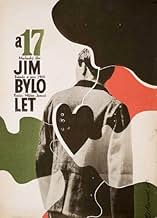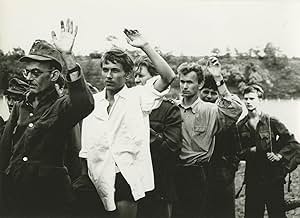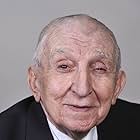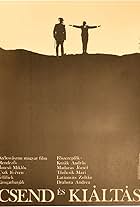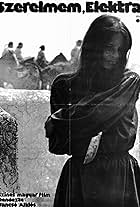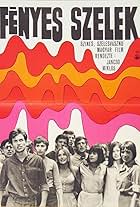Jancso was part of a group of filmmakers, who around the same time in different places, largely influenced by one another and the tide they set forth, sat down to examine in their work issues of perception—asymmetric memory, abstract representation of self and feelings, how seeing shapes narrative. Now that it has settled, we can see that they weren't all of the same make. We can see for example that Bergman was much more old-fashioned than Antonioni. A lot of Godard's novelty is just not a big deal anymore.
Jancso seems more advanced in retrospect.
Most of his films from this period are about war, they are fine as such, better than most anything by anyone else; and war (usually WWII) did after all loom large in the consciousness of people who lived through it as impressionable youngsters, so it was a much more personal experience than it is for us now, distantly desensitized to it by TV footage of war coverage and atrocity. And they are so purely about war, it seems a lot of viewers have rested upon watching his films on a certain abstraction of war.
But let's see something else. Nevermind war for a moment. We can know it is WWII somewhere in Hungary, but there are no battles, no two armies on opposite sides to clearly define conflict. We know as much about it as we do about the protagonist, nothing beyond that he's a boy of 17 tossed by forces beyond understanding. There is no broader story to define who he is versus what he is up against, nothing beyond the fact that there he is, strange people arrest him, he breaks free, is arrested again, and there's the vague hum of violence hanging over the prairie.
It is all so clear when you see through Jancso's eyes, no clutter here.
Where most filmmakers try to get the whole image, he lightly sketches edges only—the air around the thing.
Here, the image is of the boy rushing from one stage of life to the next, always moved because the gears of the world move. Others pass through the outpost, soldiers, civilians, wary, bored, some of them small-minded fools doing what they were told to do. Always with the violence, because who knows what part of what story those people live in.
The first half of this is sublime, there is no story (later there will be some), only glimpses from transient life as the boy's taken around, what the Japanese had a century before perfected in their art of woodblock carving. Buddhist-inspired in its original context, the images reinforced a worldview of fleeting sorrows, impermanence, sweet reminder of the emptiness of all things.
So it is with Jancso, who (unlike most filmmakers of war) does not dwell on suffering, presents atrocity as fleeting as everything else. Whose camera is the Japanese floating eye, always gliding at arm's length (never fixed, theatric) as though self-less consciousness hovers in and off itself, broken up by bird's eye views of abstract landscape.
Want another clue? More purely about seeing, the boy has found in captivity binoculars that he uses to look at things, so far we thought he was in the middle of nowhere, but looking out with these things he observes (creates by seeing?) a quiet town, which suddenly, illusory, seems close enough. The association is with cinema, memory, remote vision.
The boys frolic in the ruins of ancient statues, forming temporary connections in a perishable world.
The film is the wonderful blueprint of this Buddhist world, of things coming to be and vanishing again.
I recommend this. Sure there is boredom and dead time, it can't be helped. Life has this asymmetry.
Something to meditate upon.

